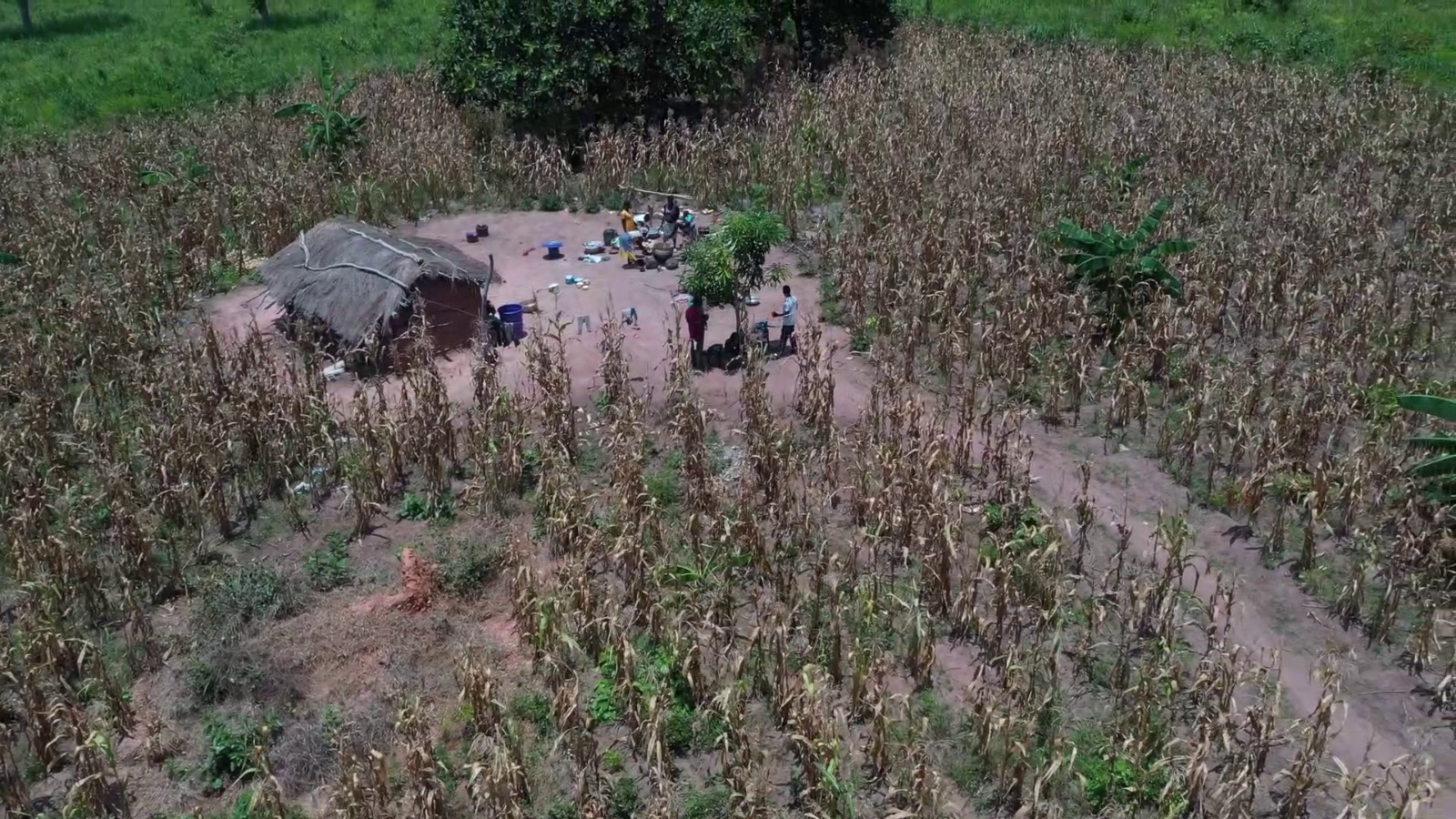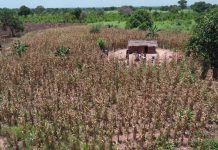
By Kofi Adu Domfeh
Close to one million Ghanaian farmers are at risk of losing their investments to a prolonged dry spell.
Already, half of these farmers have their livelihoods hanging in the balance. They planted their crops in vain because the rains failed them and they had no alternative means to moist their soils to reap good yields on their farms.
The Ghanaian government is already mobilising GH₵8 billion (US$500million) relief package to assist farmers in 8 of the country’s 16 regions grappling with the devastating effects of the ongoing dry spell.
But this is only the latest impact of the weather variation on farmers.
In recent times, the country’s cocoa sector has been threatened by unfavourable weather conditions – high temperature and excessive rainfall.
The Ghana Cocoa Board (COCOBOD) partly attributed the decline in the production of cocoa beans for the 2023/2024 crop season to the adverse effects of El Niño.
COCOBOD CEO, Joseph Boahen Aidoo, explained the climate phenomenon has significantly impacted cocoa supply globally, resulting in substantial losses to producers.
“We all know that we are not in normal times, the presence of El Niño has affected our production not just in Africa but Europe also,” he said.
Acknowledging the climate phenomenon is a good step. But scientists forewarned Ghana, long before getting here.
In 2011, climate scientists at the Colombia-based International Centre for Tropical Agriculture, CIAT, predicted that the expected increasing temperatures will lead to massive declines in cocoa production in Ghana and other cocoa-growing areas in West Africa by 2030.
Their report also revealed that an expected annual temperature rise of more than two degrees Celsius by 2050 will leave the cocoa-producing areas too hot for chocolate.
Warmer conditions mean the heat-sensitive cocoa trees will struggle to get enough water during the growing season, curtailing the development of cocoa pods, containing the prized cocoa bean.
The climate change realities are here
The World Bank Group’s 2022 Country Climate and Development Report posited that Ghana’s economic and human development is vulnerable to climate change and climate-related shocks.
Since 1960, Ghana’s average annual mean temperature has increased by around 1 degree Celsius. Rainfall has also become more erratic.
“Without prompt global and local climate actions, higher temperatures and heat stress will affect crop and labor productivity,” said the Bank.
Dr. Shalom Addo-Danso, a Senior Research Scientist with Ghana’s Forestry Research Institute, has observed the current changes in the weather pattern and other extreme events clearly show the realities of climate change and variability and its impact on the country.
“The available data and observations point to temperature increase in the last few years across all the agroecological zones and irregular but more intense rainfall,” he noted.
“The irregular but intense rainfall is oftentimes accompanied by long dry spell durations.
Even the average number of ‘hot’ days and nights have increased in recent times.
These changes are posing serious risk to many sectors of the economy, especially the cocoa sector.
The projections show that the duration of dry spells will likely increase, which may increase drought conditions.”
Ghana has ambitious climate change commitments under its Nationally Determined Contributions (NDC) to the United Nations Framework Convention on Climate Change (UNFCCC).
International climate financing remains critical for Ghana to effectively implement its NDC.
But the government of Ghana must demonstrate commitment to mobilizing internal resources and making budgetary allocations to deal with the pressing climate events that threaten lives and livelihoods.
Time to get serious with adaptation mechanisms
The government of Ghana is worried about the food security implication of the current dry spell hitting farming.
This has informed a ban of export of grains like maize, rice and sorghum to avert local shortages.
But farmer-based organisations have raised objections;
The government’s decision to ban grain export will have dire income and livelihood consequences.
Some of these farmers have contracts with foreign entities to plant grains, which will be impacted by the ban.
They rather would want to be in production than their productivity strangle.
These farmers, mainly smallholder and subsistent, are most vulnerable when they cannot access irrigation facilities.
The Concerned Farmers Association of Ghana, for instance, has questioned the government’s priorities, citing the abandoned Pwulugu Dam Project, which has already consumed $12million in investment.
“We need modern irrigation systems, not reliance on rain-fed agriculture which is outdated,” said the group.
Due to the new realities of the impacts of climate change, adaptation should become integral to the development agenda at all levels of society.
But adaptation will depend on different sectors and their vulnerabilities and adaptive capacities.
Dr. Addo-Danso suggests three options for communities to build resilience:
First, there is the need to implement the country’s National Adaptation Plan Framework, which was developed in 2018.
The Plan seeks to address climate change adaptation in a more holistic, integrated and coordinated manner.
This is important because policies and strategies provide the framework within which actions could be implemented sustainably.
Secondly, given that local communities are more vulnerable to climate change, attention should focus on community-based adaptation strategies.
Measures that place local communities at the center by empowering them to reduce their vulnerabilities and build their resilience to climate shocks.
These include building on local knowledge of weather conditions to raise awareness on climate change.
Building their capacities on poverty and disaster risks reduction strategies, and addressing gender disparities.
Which will help communities to plan and cope with the risks and impacts of climate change.
Thirdly, poor communities often depend on land-based activities and natural resources for their livelihoods and survival.
So adopting ecosystem-based approaches is critical for climate change adaptation.
These approaches harness the benefits of conservation, management and restoration of ecosystems such as forests, grasslands, wetlands and rivers; and using biodiversity and the services provided by ecosystems to reduce the vulnerabilities of communities and build their resilience to climate risks.
Reducing exposure of farmers to climate risks
The current impact of the dry spell on food security has been described as a symptom of a long neglect of erecting irrigation systems across the country.
While climate change cannot be solved by any single country, local actions can help manage physical and transition risks as well as bring large opportunities, says the World Bank.
To many farmers in Ghana, poor irrigation continues to be the bane of productivity, with no sustainable efforts by successive governments to deal with the situation.
Jacob Naja, one of the farmers worst affected by the dry spell at Akapuka in the Pru East District of the Bono Region, pleads for urgent measures to be adopted in ensuring all-year water supply for agriculture.
The Ministry of Food and Agriculture has noted that the establishment of 574 dams under the government’s ‘One Village, One Dam’ policy has been effective in holding rainwater for use by farmers.
However, the sector minister, Bryan Acheampong, has acknowledged the need for farmers to access irrigation facilities, which require pumping water from a big water source into a big canal or dam to hold the water.
What farmers expect is the demonstration of commitment to deliver this essential need, especially small irrigation systems, for all-year-round production.
As the most vulnerable to weather changes and climate variability, farmers would also need to diversify their livelihood investments and reduced their exposure to climate risk.
“One of the best options is for them to adopt climate-smart agriculture practices such as planting different crop varieties, and incorporating trees into their cropping systems including nitrogen-fixing species,” said Dr. Shalom.
“Farmers also need access to climate information.
They should be able to plant drought-tolerant varieties, adopt rain harvesting techniques and mulching, as well as use treated manure and organic fertilizers.
These practices ensure increases in farming system productivity and incomes, and at the same time help them to build resilience to climate change,” he noted.

















